North East India Travel Blog
Travelling to North East India is a fascination for everyone. Traveling to the North East of India makes some of the finest memories to keep for any and every traveler. The flora, fauna, culture, heritage, people, traditions and hospitality are some of the beautiful essentials of the North East of India.
In the North East India travel blog, we have made an attempt to showcase the various aspects of North East India through small snippets of useful information for anyone traveling towards this part of the country and exploring the hidden gems that North East India has to offer to travelers.
Latest North East India Travel Blog
Sangai Festival
Every year the State of Manipur celebrates the “Manipur Sangai Festival” from 21st to 30 th November. The ‘Festival’ is named after the State animal, Sangai, the brow-antlered deer found only in Manipur. It started in the year 2010 and has grown over the years into a big platform for Manipur to showcase its rich tradition and culture to the world.
The festival is labeled as the grandest festival of the State today and helps promote Manipur as a world class tourism destination. Every edition of the festival showcases the tourism potential of the state in the field of Arts & Culture, Handloom, Handicrafts, Indigenous Sports, Cuisine, Music and Adventure sports of the state etc.
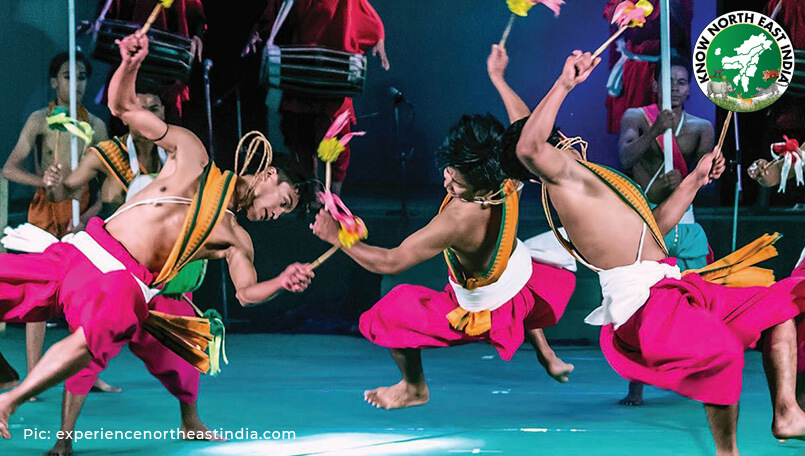 Content: http://www.manipurtourism.gov.in/sangai-festival-2018/
Content: http://www.manipurtourism.gov.in/sangai-festival-2018/
Bhumchu Festival
Bhumchu festival is celebrated at Tashiding Monastery, West Sikkim on the 15th day of the first month of the Lunar calendar corresponding to the month of February/March. The opening of the vessel containing the holy water is the major highlight of the festival.
The level of water in this vessel is believed to be a sign of the fortunes of the coming year. Each year, the vessel is opened to verify the level of water in it, it follows that if the water level is higher or lower then it signifies ill fortune such as droughts, diseases and natural calamities.
A special recitation is conducted and the seal of the vase is checked before it is taken out of the case. After the vessel is opened, the monks take seven cups of water from it and after mixing it with water from Rathong Chu distribute it among the devotees. To fill the vessel again, seven cups of water are taken from Rathong Chu and put into the vase and sealed until next year. Devotees from all over Sikkim as well as neighboring countries like Bhutan, Nepal, etc. come to take part in this festival.
 https://www.sikkimtourism.gov.in/Public/ExperienceSikkim/FairsAndFestivalDetails/FF20A082?type=Fe
stival
https://www.sikkimtourism.gov.in/Public/ExperienceSikkim/FairsAndFestivalDetails/FF20A082?type=Fe
stival
Rongali Bihu
Rongali or Bohag Bihu derives its name from Sanskrit Vishuvam when day and night are rendered equal through the vernal equinox. People welcome the spring season and pray for a bountiful and rich harvest.This festival is celebrated in the month of Bohag (Mid-April), the first month of the Assamese calendar. The exact date in the English calendar varies, but the festival normally starts from the 13th day of the month of April.
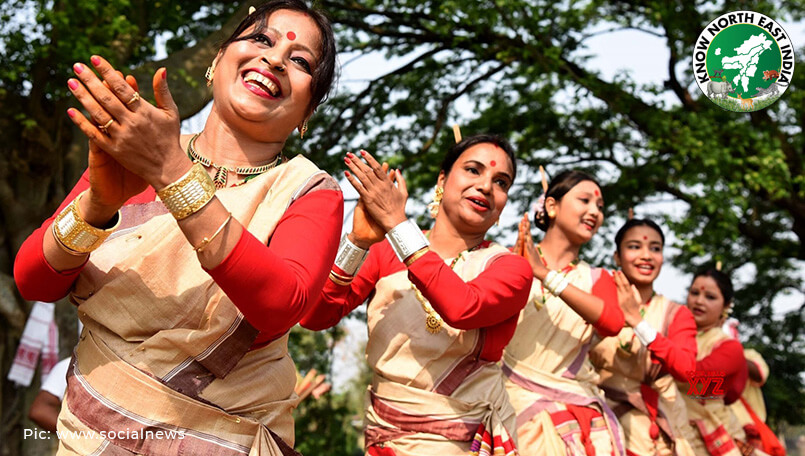 Content: https://www.tourism-of-india.com/events-festival/rongali-bihu.html#:~:text=Rongali%20or%20Bohag%20Bihu%20derives,month%20of%20the%20Assamese%20calendar.
Content: https://www.tourism-of-india.com/events-festival/rongali-bihu.html#:~:text=Rongali%20or%20Bohag%20Bihu%20derives,month%20of%20the%20Assamese%20calendar.
Mamita Festival
Mamita Festival is a festival is observed in Tripura by the Tripuri , Jamatia , and Noatia people after harvesting various crops including rice, sesame, vegetables, etc from the jhum or paddy field. In this day Tripuri people worship Mailuma and Khuluma deities by offering newly harvested crops . On this day a dance is performed by group of young male and females named" Mamita dance.
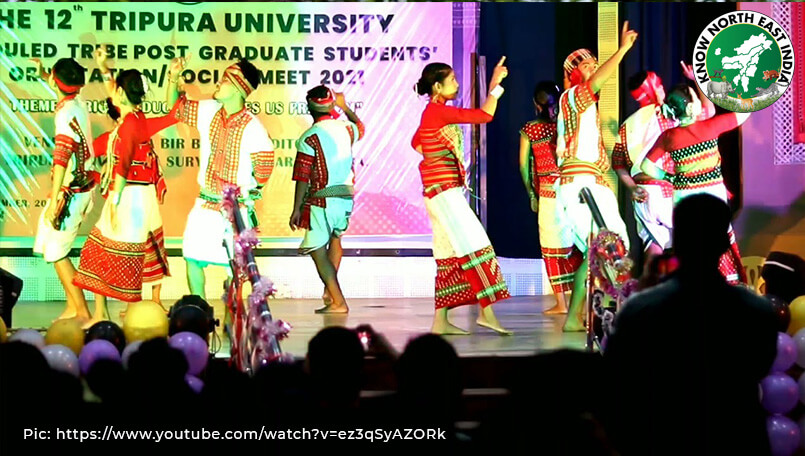 Contenthttps://en.wikipedia.org/wiki/Mamita_Festival
Contenthttps://en.wikipedia.org/wiki/Mamita_Festival
Moatsu Festival
The Moatsu is a festival celeberated by Ao People of Nagaland. This is a festival of community bonding celebrated in May for 3 days. As a celebration, the villagers express their friendship for each other by exchanging gifts, making new friends, feasting, bon fire etc.
Moatsü is celebrated in the first week of May every year. Various rituals are performed during this period. The Aos observe Moatsü Mong after the sowing is done. The festival provides them a period of recreation and entertainment after the stressful work of clearing fields, burning jungles, sowing seeds, cleaning up the Tsubu (wells) and repairs and construction of houses by elders of the Putu Menden, stretching over a week.
The Moatsü festival is marked by peppy songs and dances. The whole festival full of merry making and fun is observed only for three days from May 1 to 3.
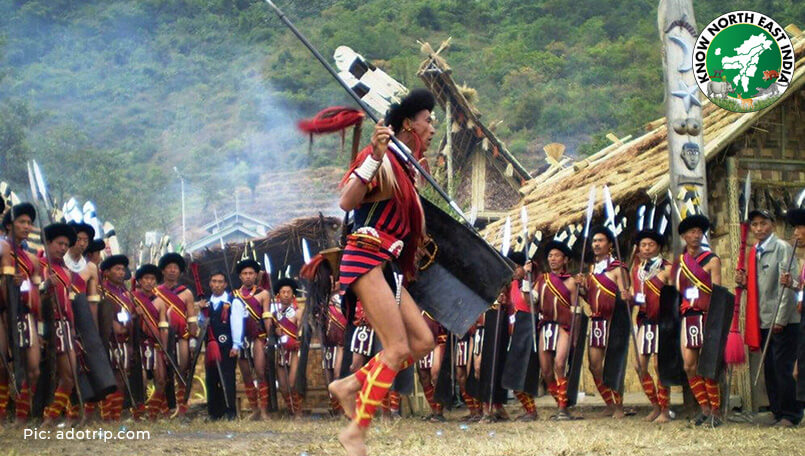 Content: https://mokokchung.nic.in/culture-heritage/
Content: https://mokokchung.nic.in/culture-heritage/
Anthurium Festival
About 30 km to the West ,about an hour’s drive from Aizawl City sprawls a prominent mountain on which Reiek village is located. This is one destination that one should not miss visiting. The mountain itself, though appearing to be of gentle slopes on its eastern side has spectacular rocky cliffs notched with caves and caverns in an environment of luxuriant natural forest preserved since the days of the Mizo chiefs.
It is here that the colorful Anthurium Festival is to be celebrated on the 4th & 5th of October, 2019. It is a successful tourism promotion venture celebrated every year at the tourist resort in Reiek Village at the foothills of the mystic Reiek Mountain during the first weekend of October as Festival Amidst Nature during the peak season of the beautiful and exotic Anthurium blossom. It is a two days extravaganza that showcase various culture and traditional activities.
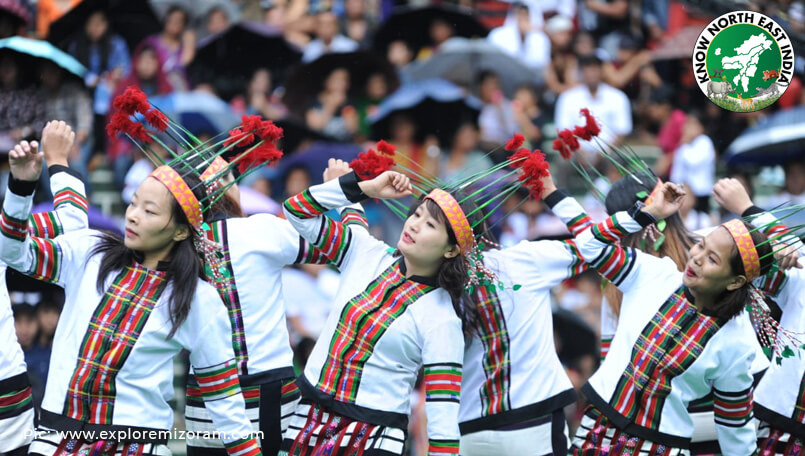 Content: https://tourism.mizoram.gov.in/cont/4
Content: https://tourism.mizoram.gov.in/cont/4
Keibul Lamjao National Park
The Keibul Lamjao National Park is a national park in the Bishnupur district of the state of Manipur in India. It is 40 km 2 (15.4 sq mi) in area, the only floating park in the world, located in North East India , and an integral part of Loktak Lake . The national park is characterized by floating decomposed plant material locally called phumdi . It was created in 1966 as a wildlife sanctuary to preserve the natural habitat of the endangered Eld's deer In 1977, it was gazetted as national park.
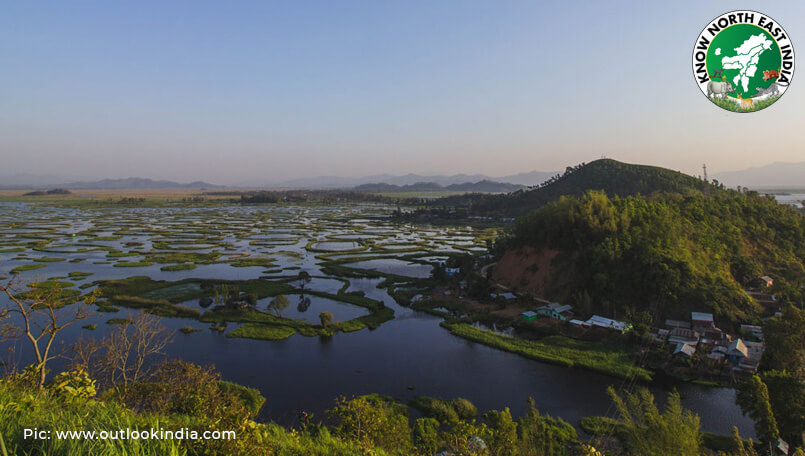 Content: https://en.wikipedia.org/wiki/Keibul_Lamjao_National_Park
Content: https://en.wikipedia.org/wiki/Keibul_Lamjao_National_Park
Tawang Monastery
About 2 Kms from the town is the Tawang Monastery. The Monastery is the second biggest and oldest in Asia and is known as the Tawang Ganden Namgyal Lhatse i.e., the celestial paradise of divine site chosen by the horse was founded by Merag Lodroe Gyamtso in the year 1680-81. The Dalai Lama gave him a painting of goddess Palden Lhamo to be kept in the monastery. The 8 m high glided statue of Lord Buddha dominates the sanctum.
The great rotating prayer wheels, priceless thangkas, the drone of monks in prayer, sputtering butter lamps are an evocative vision. The Tawang Monastery has a residential building for the monks, a library, a museum and school for the basic education. Pierced atop a hill dominating everything around and below it is an enormous yellow-roofed Tawang monastery which was originally a large and fortified complex strategically sited where the caravan routes from Tibet, Bhutan and West Kameng met. The place is also famous with the legend of 7th Century A.D., King Kalawangpo and Khandro Drowa Zangmo, known as rTa nag mandal sgang.
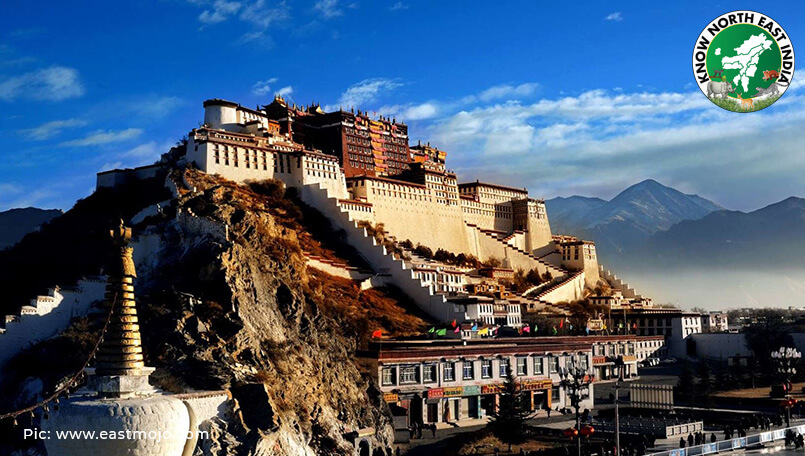 Content: https://tawang.nic.in/tourist-place/tawang-monastery/
Content: https://tawang.nic.in/tourist-place/tawang-monastery/
Wangala Festival
Wangala is the harvest festival of the Garo community. Wangala is celebrated in many separate places across the season. Those who want to experience the largest Wangala can head to the 100 Drums Festival – a more recent convergence of multiple festivals on one single stage held on the first week of November.
Wangala is a reminder to all of the rich indigenous culture of the Garos – many of the symbols and rituals reflect the strong beliefs that existed before Christianity entered these verdant hills. The main deity of Wangala is the sun-god and the main soundtrack is provided by the Nagra drum. Towards the end of the festival (which continues for days), the largest batch of dancers converge on the main celebration area with multiple drums and perform the ceremonial and traditional dances.
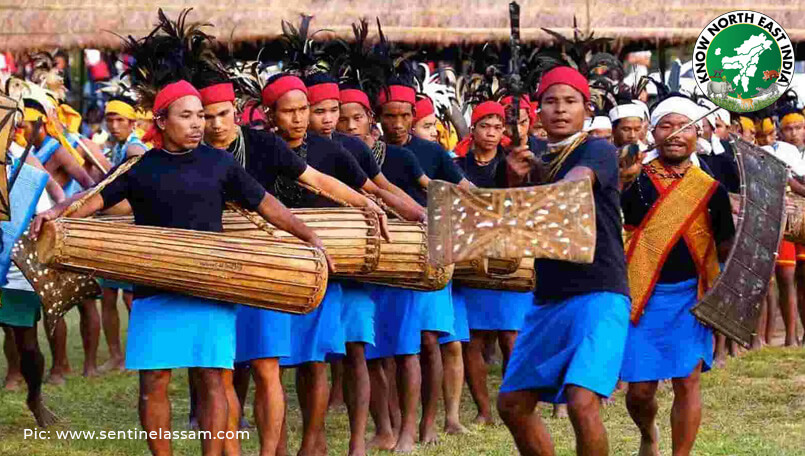 Content: https://www.meghalayatourism.in/experiences/wangala-festival/
Content: https://www.meghalayatourism.in/experiences/wangala-festival/
Solung Festival
The celebration is continued for five consecutive days. The first day is called ‘Solung-Gidi Dogin’ or the day of preparation, the second is the main day which is called Doreph-Long (the day of animal sacrifice), the third day is ‘Binnayat Binam’ or worshipping the goddess of plenty and prosperity, the fourth day is Yaktor of Ekoph, when the villagers prepare weapons for war. On the fifth day, the priest is given a ceremonial send-off when the girls sing and dance. During the five-day celebration, every evening the Miri sings the 'Solung Abung' and at the same time narrates the stories of the origin of man, animals, and plants, the ancestry of the Adis, lives, and the deeds of the Adi Heroes.
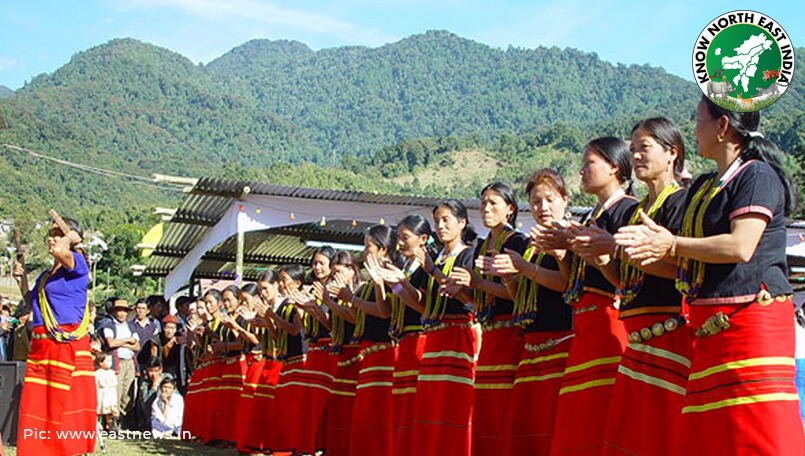 Content: https://www.hindustantimes.com/photos/lifestyle/in-pics-everything-you-need-to-know-about-solung-festival-of-arunachal-pradesh-
Content: https://www.hindustantimes.com/photos/lifestyle/in-pics-everything-you-need-to-know-about-solung-festival-of-arunachal-pradesh-
Phumdis
Phumdis are a series of floating islands, exclusive to the Loktak Lake in Manipur state, in northeastern India. They cover a substantial part of the lake area and are heterogeneous masses of vegetation, soil and organic matter, in different stages of decay. The largest single mass of phumdi is in the southeastern part of the lake, covering an area of 40 km2 (15.4 sq mi). This mass constitutes the world’s largest floating park, named Keibul Lamjao National Park. The park was formed to preserve the endangered Eld's deer subspecies, called sangai in the Meitei language, indigenous to this area.
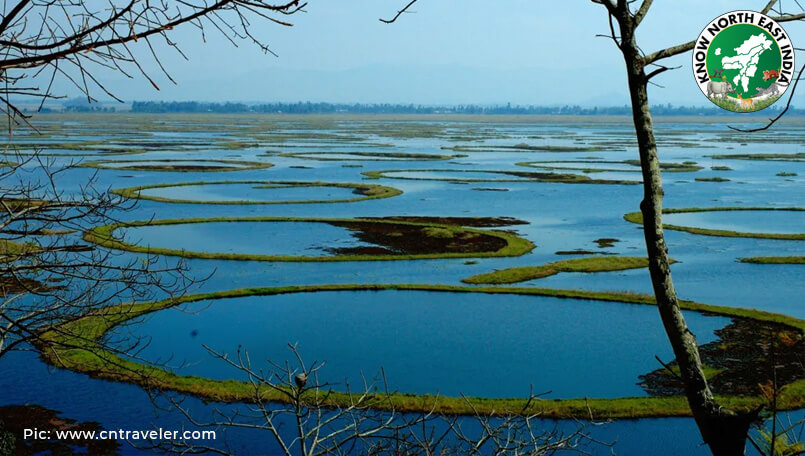 Content: https://en.wikipedia.org/wiki/Phumdi
Content: https://en.wikipedia.org/wiki/Phumdi
Khangchendzonga National Park
Located at the heart of the Himalayan range in northern India (State of Sikkim), the Khangchendzonga National Park includes a unique diversity of plains, valleys, lakes, glaciers and spectacular, snow-capped mountains covered with ancient forests, including the world’s third highest peak, Mount Khangchendzonga. Mythological stories are associated with this mountain and with a great number of natural elements (caves, rivers, lakes, etc.) that are the object of worship by the indigenous people of Sikkim. The sacred meanings of these stories and practices have been integrated with Buddhist beliefs and constitute the basis for Sikkimese identity.
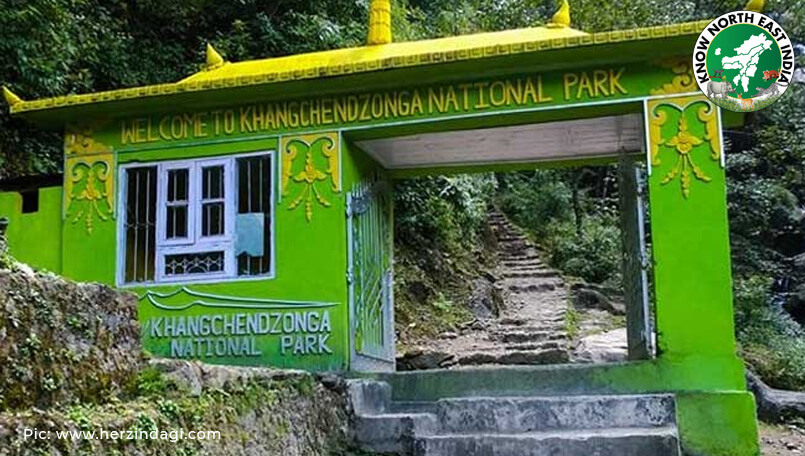 Content: https://whc.unesco.org/en/list/1513/
Content: https://whc.unesco.org/en/list/1513/
Dzokou Valley
Also known as the Valley of Flowers, the Dzukou Valley is one of the most visited tourist attractions in the North East. Located at an altitude of 2450 meters, it is considered to be one of the most famous adventure spots in Kohima, Nagaland. It is located behind the Japfu range, another important travel destination for tourists in the state. Mostly visited during the full bloom season, the beauty of the valley is best appreciated when lilies in white and pink, aconitums, euphorbias, and hundreds of other botanical species in varied colours adorn the valley in monsoon.
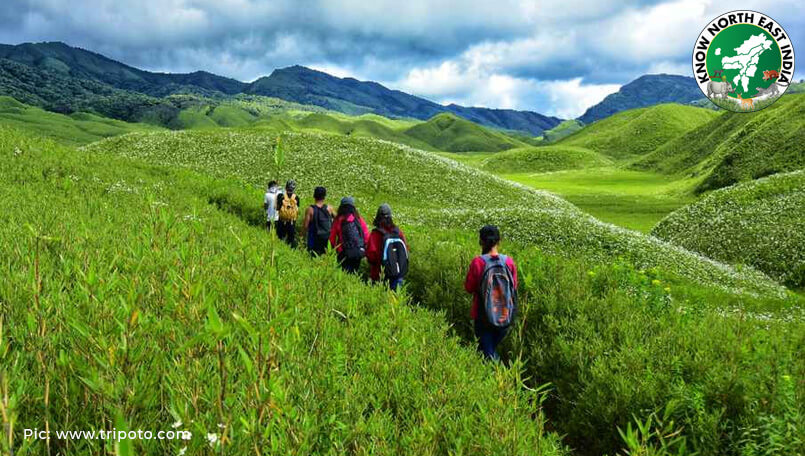 Content: https://www.tourmyindia.com/states/nagaland/dzukou-valley.html
Content: https://www.tourmyindia.com/states/nagaland/dzukou-valley.html
TRIPURA
Tripura is a state in northeastern India. The third-smallest state in the country, it covers 10,491.69 km2 (4,050.86 sq mi) and is bordered by Bangladesh to the north, south, and west, and the Indian states of Assam and Mizoram to the east. In 2011 the state had 3,671,032 residents, constituting 0.3% of the country's population. The area of modern Tripura—ruled for several centuries by the Manikya dynasty—was part of an independent princely state under the protectorate of the British Empire. The independent Tripuri Kingdom (also known as Hill Tippera) joined the newly independent India in 1949.
Tripura lies in a geographically isolated location in India, as only one major highway, the National Highway 8, connects it with the rest of the country. Five mountain ranges—Boromura, Atharamura, Longtharai, Shakhan and Jampui Hills—run north to south, with intervening valleys; Agartala, the capital, is located on a plain to the west. The state has a tropical savanna climate, and receives seasonal heavy rains from the south west monsoon.
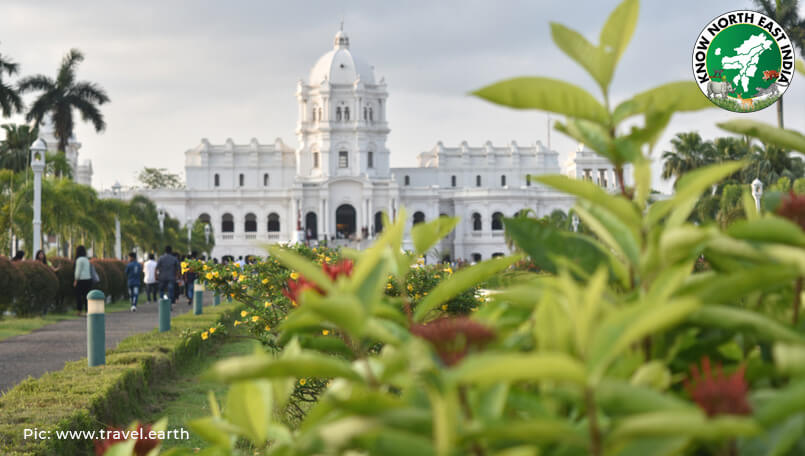 Content: https://en.wikipedia.org/wiki/Tripura
Content: https://en.wikipedia.org/wiki/Tripura
Dong Village
Dong is a small picturesque village inhabited by the Meyors just 7 km away from Walong, and is situated in the left bank of Lohit River. Snow capped mountains and beautiful pine forests make the place immensely inviting. This village is also one of the villages from where the earliest sunrise can be witnessed. The millennium sunrise was witnessed by people from all across the world at Dong on 1st Jan 2000. The village is now connected by a iron floored foot suspension bridge over the river Lohit. The Dong valley is extremely beautiful radiating divine peace.
 Content: https://anjaw.nic.in/tourist-place/dong/
Content: https://anjaw.nic.in/tourist-place/dong/
Bhaichung Bhutia
Bhaichung Bhutia (born 15 December 1976), also spelled as Baichung Bhutia, is an Indian former professional footballer who played as a striker. Bhutia is considered as the torchbearer of Indian football in the international arena. He is often nicknamed the Sikkimese Sniper because of his shooting skills in football. Three-time Indian Player of the Year I. M. Vijayan described Bhutia as "God's gift to Indian football".
 Content: https://en.wikipedia.org/wiki/Bhaichung_Bhutia
Content: https://en.wikipedia.org/wiki/Bhaichung_Bhutia
Phawngpui National Park or Phawngpui Blue Mountain National Park
This is one of the two national parks of India in Mizoram, the other and the larger being Murlen National Park. It is about 300 km from the main city Aizawl, located in the Lawngtlai district, towards the southeast of Mizoram and relatively close to Burma. It bears the name of the mountain Phawngpui, often called the Blue Mountain of Mizoram, which is the highest mountain peak in the state, reaching 2,157 m asl.The national park covers the entire mountain along with the surrounding reserve forest.
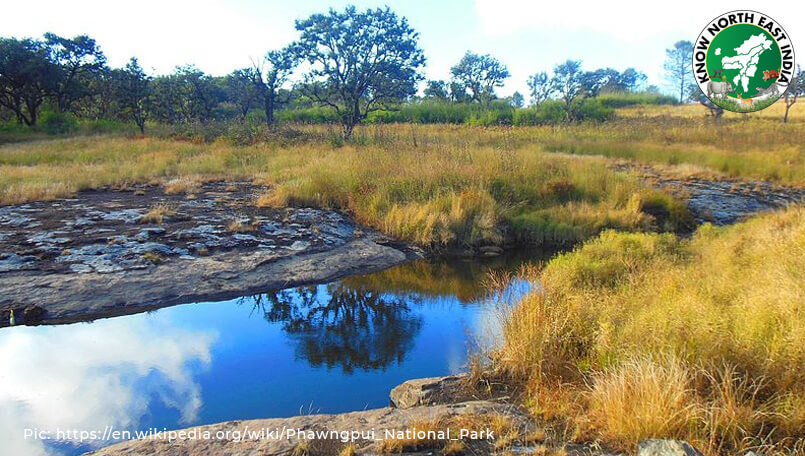 Content: https://en.wikipedia.org/wiki/Phawngpui_National_Park
Content: https://en.wikipedia.org/wiki/Phawngpui_National_Park
Hojagiri Folk dance
Hojagiri is a folk dance, performed in the state of Tripura, India by Tripuri people of Reang clan.[2] It is performed by women and young girls, about 4 to 6 members in a team, singing, balancing on an earthen pitcher and managing other props such as a bottle on the head and earthen lamp on the hand.[3] while only the lower half of the body is moved.
 Content: https://en.wikipedia.org/wiki/Hojagiri
Content: https://en.wikipedia.org/wiki/Hojagiri
Manipur
Manipur is a state in Northeast India, with the city of Imphal as its capital. It is bounded by the Indian states of Nagaland to the north, Mizoram to the south and Assam to the west. It also borders two regions of Myanmar, Sagaing Region to the east and Chin State to the south. The state covers an area of 22,327 square kilometres (8,621 sq mi) and has a population of almost 3 million, including the Meitei, who are the majority group in the state, the Meitei Pangals (Manipuri Muslims), Naga tribes, Kuki/Zo tribes and other communities, who speak a variety of Sino-Tibetan languages.
Manipur has been at the crossroads of Asian economic and cultural exchange for more than 2,500 years.It connects the Indian subcontinent to South east Asia enabling migration of people, cultures and religions.
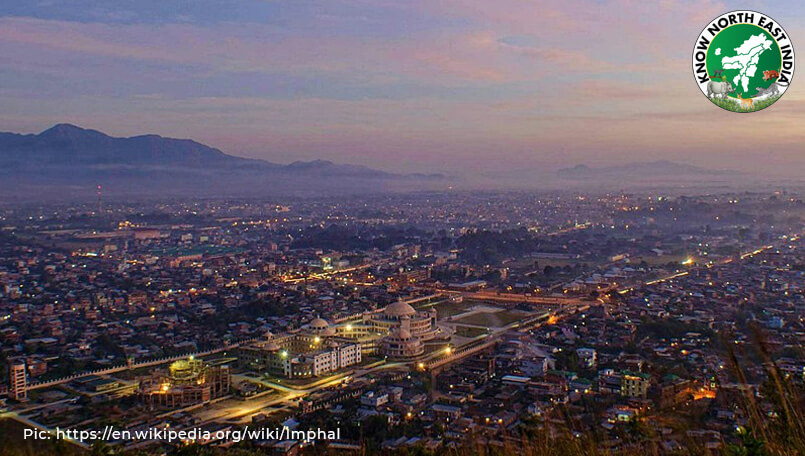 Content: https://en.wikipedia.org/wiki/Manipur
Content: https://en.wikipedia.org/wiki/Manipur
GUWAHATI
Guwahati is the biggest city of the Indian state of Assam and also the largest metropolis in northeastern India. Dispur, the capital of Assam, is in the circuit city region located within Guwahati and is the seat of the Government of Assam. A major riverine port city along with hills, and one of the fastest growing cities in India, Guwahati is situated on the south bank of the Brahmaputra. It is called the 'Gateway to North East India'.
 Content: https://en.wikipedia.org/wiki/Guwahati
Content: https://en.wikipedia.org/wiki/Guwahati
RANG GHAR
The Rang Ghar meaning "House of Entertainment") is a two-storeyed building which once served as the royal sports-pavilion where Ahom kings and nobles were spectators at games like buffalo fights and other sports at Rupahi Pathar (pathar meaning "field" in Assamese) - particularly during the Rongali Bihu festival in the Ahom capital of Rangpur.
It is 3 km away from the center of Sivasagar Town. Situated by the side of the Assam Trunk Road, it lies to the northeast of the Rangpur Palace, a seven-storied royal complex comprising the Talatal Ghar and the Kareng Ghar. Said to be one of the oldest surviving amphitheaters in Asia, the building was first constructed during the reign of Swargadeo Rudra Singha with bamboo and wood. It was later rebuilt with brick by Swargadeo Pramatta Singha in AD 1744-1750.
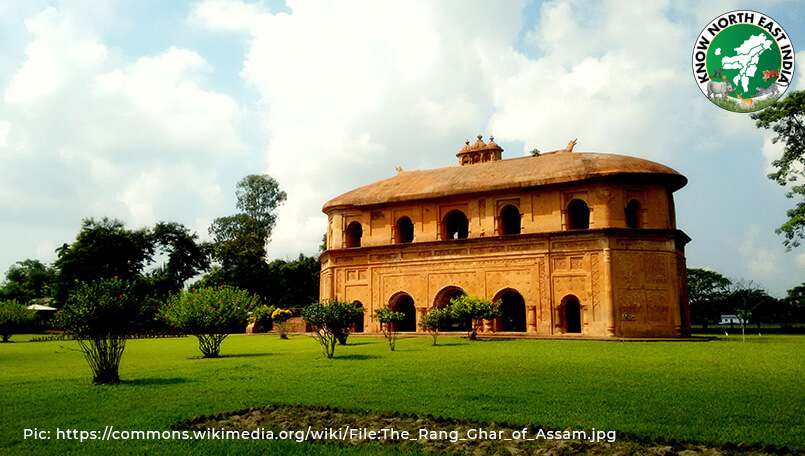 Content: https://en.wikipedia.org/wiki/Rang_Ghar
Content: https://en.wikipedia.org/wiki/Rang_Ghar
Kaziranga National Park
Kaziranga National Park is a national park in the Golaghat, Karbi Anglong and Nagaon districts of the state of Assam, India. The sanctuary, which hosts two-thirds of the world's great one-horned rhinoceroses, is a World Heritage Site.[2] According to the census held in March 2018 which was jointly conducted by the Forest Department of the Government of Assam and some recognized wildlife NGOs, the rhino population in Kaziranga National Park is 2,413. It comprises 1,641 adult rhinos (642 males, 793 females, 206 unsexed); 387 sub-adults (116 males, 149 females, 122 unsexed); and 385 calves.
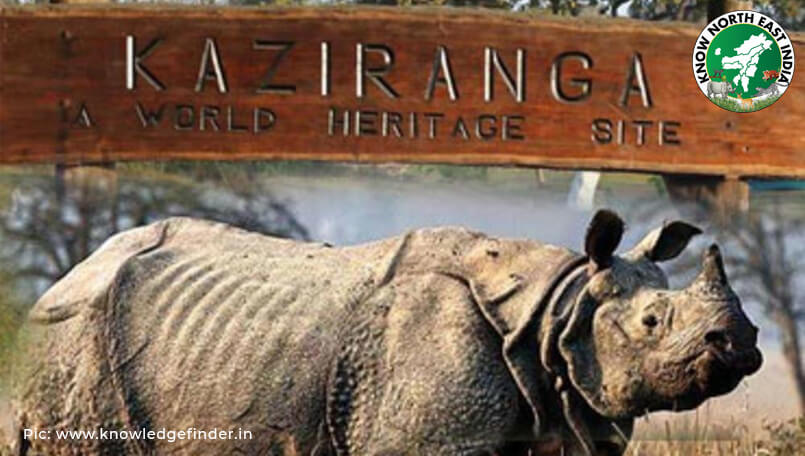 Content: https://en.wikipedia.org/wiki/Kaziranga_National_Park
Content: https://en.wikipedia.org/wiki/Kaziranga_National_Park
Mishmi Shawls, Arunachal Pradesh
Mishmi weaving is more elaborate, though here too the straight line and band is in frequent use. In Tuensang, the most characteristic shawls generally have an essential deign of stripes and bands of contrasting blacks, reds and blues. The commonest Konyak skirt gains its aesthetic effect by a combination of a large number of narrow horizontal lines of red, black and white set at varying distances from each other, or by alternating red bands with groups of black, yellow and white lines.
These single or multiple line and band motifs are the simplest of all and naturally the easiest to weave, sometimes they serve as borders for more complicated designs; sometimes they form the entire pattern in their own right. In their simplicity and directness, there is something very satisfying, and by the rhythm of frequent repition, they produce an effect not unlike that of the rhymed decasyllabic couplet in verse. This may not always reach the heights of the romantic lyric, but is a very serviceable means of conveying ideas. It is among the Mishmis especially the Idu Mishmis that diamond designs have been brought to the highest degree of elaboration. They are woven on shawls, skirts, coats and bags, diamond within diamond, diamond plain and diamonds decorated, diamonds arranged in every possible combination.
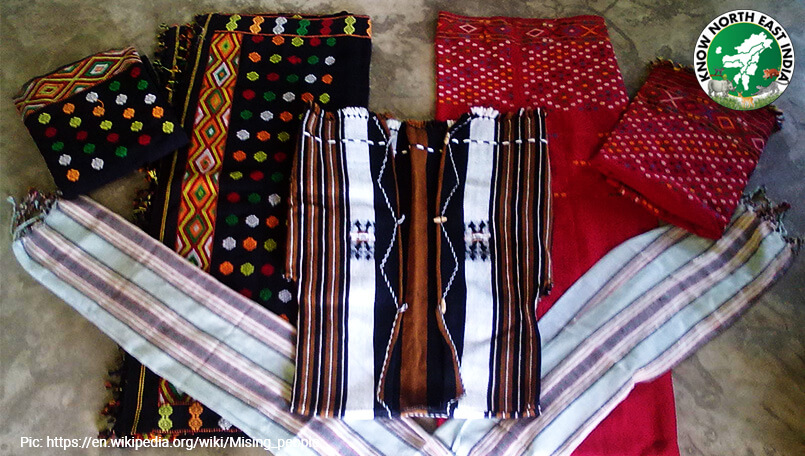 https://ignca.gov.in/divisionss/janapada-sampada/northeastern-regional-centre/textiles-of-arunachal-pradesh/
https://ignca.gov.in/divisionss/janapada-sampada/northeastern-regional-centre/textiles-of-arunachal-pradesh/
Nagaland
Nagaland is bordered by the state of Arunachal Pradesh to the north, Assam to the west, Manipur to the south and the Sagaing Region of Myanmar to the east. Its capital city is Kohima and its largest city is Dimapur . It has an area of 16,579 square kilometres (6,401 sq mi) with a population of 1,980,602 per the 2011 Census of India, making it one of India's smallest states.
Nagaland became the 16th state of India on 1 December 1963. Agriculture is its most important economic activity, accounting for over 70% of its economy. Other significant activities include forestry, tourism, insurance, real estate, and miscellaneous cottage industries. It lies between the parallels of 98 and 96 degrees east longitude and 26.6 and 27.4 degrees latitude north. It is home to a rich variety of flora and fauna.
 https://en.wikipedia.org/wiki/Nagaland
https://en.wikipedia.org/wiki/Nagaland
Singda Dam, Manipur
Singda Dam is a multipurpose project which is constructed at the singda river in Kangchup, located at about 19 km west of Imphal.Singda Dam in Manipur, India, has been constructed by National Projects Construction Corporation Limited . It is one of the highest earthen dam in India. The dam is 490m in length and 60m in height. The main objectives of the dam is to provide drinking water to greater Imphal and a proper irrigation facility to its nearby area. The construction of the dam started in 1975 and completed in 1995 under the revised project cost of Rs.6814.00 lakh. The Government of Manipur has set up Singda Irrigation Project in Singda.
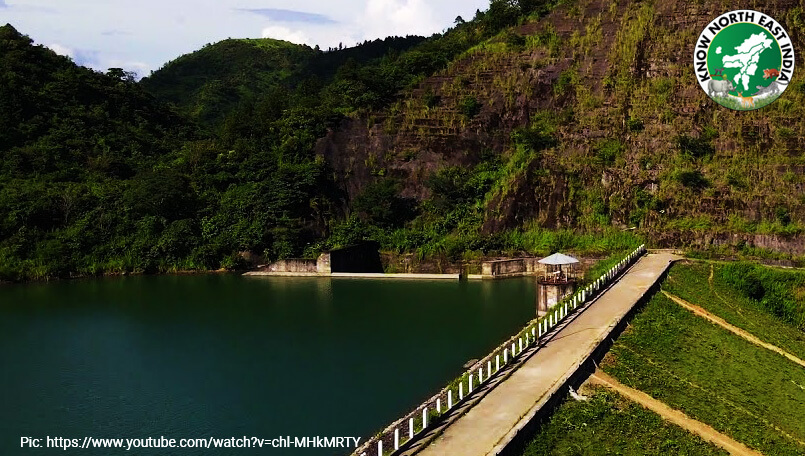 https://www.tripuntold.com/manipur/imphal-west/singada-dam/
https://www.tripuntold.com/manipur/imphal-west/singada-dam/
Lungvando, Mizoram
Lungvando means a stone reaching heaven. A very tall beautiful chiselled stone pillar, about 75cm in diameter and 6m in height(before it was broken), is found between Biate and Lungdar in the eastern part of Serchhip district. Legend has it that in ancient times this stone pillar was very tall, almost touching heaven and hence nothing could go in between. Once a peacock squeezed into it and got crushed into pieces. This pillar is believed to be the memorial stone of a chief of the Biate tribe who once were residents of this area before the advent of the more powerful Lushei group.

Majauli, Assam
Mājuli or Majuli (mazuli is a river island in the Brahmaputra River, Assam and in 2016 it became the first island to be made a district in India. It had an area of 880 square kilometres (340 sq mi) at the beginning of the 20th century, but having lost significantly to erosion it covers 553 square kilometres (214 sq mi) as at 2014. Majuli has shrunk as the river surrounding it has grown.
The island is formed by the Brahmaputra River in the south and the Kherkutia Xuti, an anabranch of the Brahmaputra, joined by the Subansiri River in the north.Mājuli island is accessible by ferries from the city of Jorhat . The island is about 300–400 kilometres (186–249 mi) east from the state's largest city — Guwahati . It was formed due to course changes by the river Brahmaputra and its tributaries, mainly the Lohit . Mājuli is the abode of the Assamese neo- Vaishnavite culture.
 https://en.wikipedia.org/wiki/Majuli
https://en.wikipedia.org/wiki/Majuli
Easterine Kire
Easterine Kire is a poet and author who currently lives in northern Norway. The majority of her writings are based in the lived realities of the people in Nagaland in north-east India. Her motivation to write is summed up in this statement by her in an interview, I felt we needed to create written Naga Literature. We have so much oral narratives but with oral dying out, it's all going to be lost Apart from writing, she also performs Jazz poetry with her band Jazzpoesi.
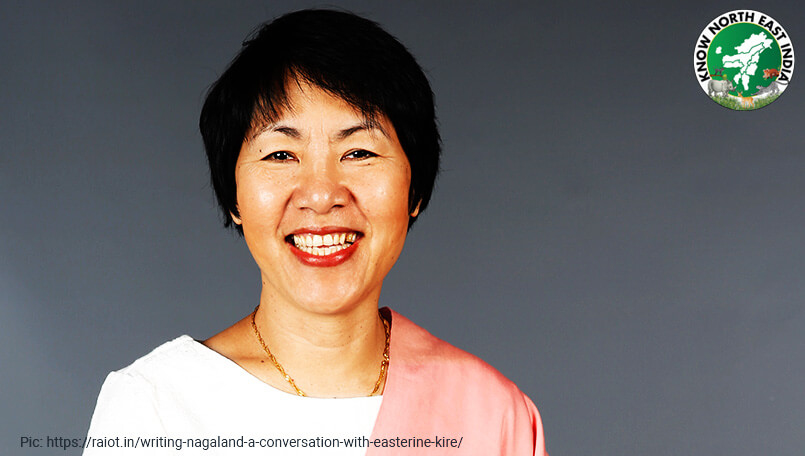 https://en.wikipedia.org/wiki/Easterine_Kire
https://en.wikipedia.org/wiki/Easterine_Kire
Thangka
The culmination of Tibetan Buddhist art, thangkas are pictorial religious scrolls. Most often hand painted with mineral colours and gold dust, traditional thangkas were also embroidered or appliqued. Seen in monasteries and also homes, they are not merely decorative in function but are highly revered objects with religious significance. The art form originated in Nepal in the 7th century, developing into several schools of painting.
Historically, thangkas were used as teaching aids. A lama or teacher would travel giving talks on Buddha’s life and teachings. He would carry with him painted scrolls to convey spiritually significant events, aspects of different deities, or Buddhist concepts. Made strictly according to the scriptures, thangkas are considered a visual representation of a spiritual reality.
 https://artsandculture.google.com/exhibit/sikkimese-thangkas-religious-art-dastkari-haat-samiti/dAJCbcr43zlvKw?hl=en
https://artsandculture.google.com/exhibit/sikkimese-thangkas-religious-art-dastkari-haat-samiti/dAJCbcr43zlvKw?hl=en
Dihang Dibang
Dihang-Dibang or Dehang-Debang is a biosphere reserve constituted in 1998. It is in the Indian state of Arunachal Pradesh. The Mouling National Park and the Dibang Wildlife Sanctuary are located fully or partly within this biosphere reserve. The reserve spreads over three districts: Dibang Valley, Upper Siang, and West Siang. It covers high mountains of Eastern Himalaya and Mishmi Hills. The elevation in the reserve ranges up to more than 5,000 metres (16,000 ft) above sea level. An important fact relating to this Biosphere reserve is that it has natural vegetation stretching in an unbroken sequence from the tropics to mountain tundra.
The type of vegetation found in this biosphere reserve can be grouped as 1. Sub-tropical broad leafed forests, 2. Sub tropical pine forest, 3. Temperate broad leafed forests, 4. Temperate conifer, 5. Sub-alpine woody shrub, 6. Alpine meadow( mountain Tundra), 7. Bamboo brakes, 8. Grassland. The habitat in Dihang-Dibang ranges from tropical wet evergreen in the river gorges to subtropical, temperate, alpine and permanent snow.
 https://en.wikipedia.org/wiki/Dihang-Dibang_Biosphere_Reserve
https://en.wikipedia.org/wiki/Dihang-Dibang_Biosphere_Reserve
Jews harp
Gongmina - It is also known as ‘Jew’s harp’, is made of a thin slit of bamboo. The thin bamboo is cut in such a manner that a thin tongue runs down the centre of the slip. There is a short string fastened to the Jew’s harp and on the other hand there is a small bamboo handle. It is played during dance festivals and considered as the ‘queen’ of musical instruments in Meghalaya.
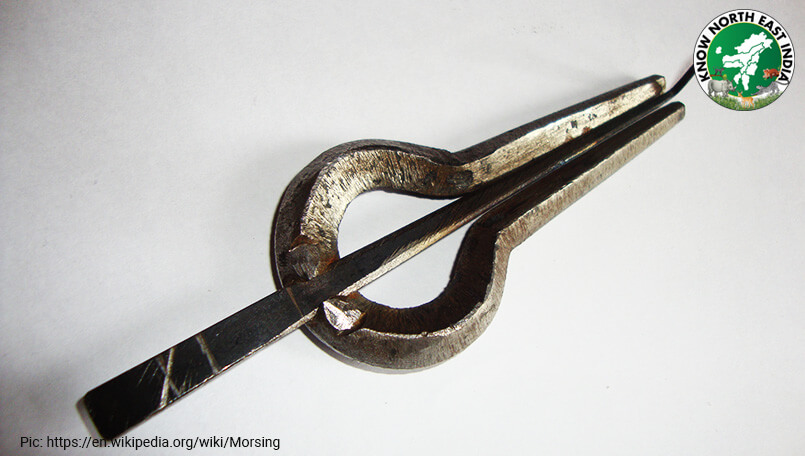 https://www.indianetzone.com/79/musical_instruments_meghalaya.htm
https://www.indianetzone.com/79/musical_instruments_meghalaya.htm
Ananda Chandra Barua
Ananda Chandra Barua (1907–1983) was a writer, poet, playwright, translator, journalist and actor from Assam. He is popularly known as Bokulbonor Kobi (বকুলবনৰ কবি) in Assamese literacy society. He was honoured with, most notably the Padma Shri title and Sahitya Akademi award.
 https://en.wikipedia.org/wiki/Ananda_Chandra_Barua
https://en.wikipedia.org/wiki/Ananda_Chandra_Barua
Jonbeel Mela
Jonbeel Mela is a three-day annual indigenous Tiwa Community fair held the weekend of Magh Bihu at a historic place known as Dayang Belguri at Joonbeel. It is 3 km from Jagiroad in Morigaon district of Assam and 32 km from Guwahati. The National Highway connecting the mela is NH 37. The Joonbeel (Joon and Beel are Assamese terms for the Moon and a wetland respectively) is so called because a large natural water body is shaped like a crescent moon.
 https://en.wikipedia.org/wiki/Jonbeel_Mela
https://en.wikipedia.org/wiki/Jonbeel_Mela
Kohima war cemetery
Kohima War Cemetery is a memorial dedicated to soldiers of the 2nd British Division of the Allied Forces who died in the Second World War at Kohima, the capital of Nagaland, India, in April 1944. The soldiers died on the battleground of Garrison Hill in the tennis court area of the Deputy Commissioner's residence. According to the Commonwealth War Graves Commission, which maintains this cemetery among many others in the world, there are 1,420 Commonwealth burials of the Second World War at this cemetery, and a memorial to an additional 917 Hindu and Sikh soldiers who were cremated in accordance with their faith. The memorial was inaugurated by Field Marshal Sir William Slim, then Commander of the 14th Army in Burma.
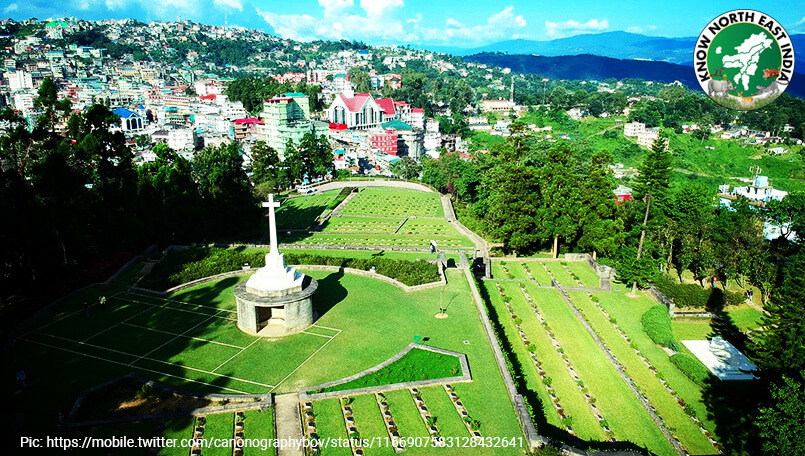 https://en.wikipedia.org/wiki/Kohima_War_Cemetery
https://en.wikipedia.org/wiki/Kohima_War_Cemetery
Laiphadibi or Laidhibi
The Meiteilon word for doll is laiphadibi. It is made up of two words: lai, which means god and phadi, which means a shabby piece of cloth. The last syllabi, bi, denotes the feminine gender. So, laiphadibi is a feminine image of god, made from shabby clothes. They are treated as living spirits with feelings. The dolls are always referred to as ita, meaning female companion.
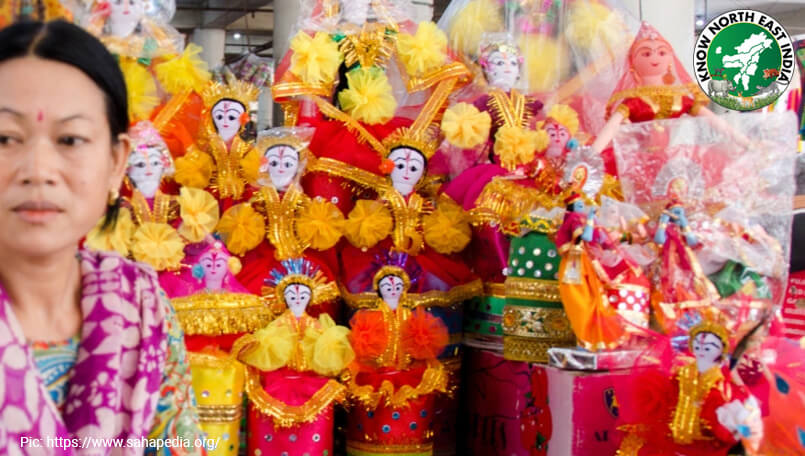 https://www.sahapedia.org/laiphadibi-cloth-dolls-guard-and-guide-manipuri-people
https://www.sahapedia.org/laiphadibi-cloth-dolls-guard-and-guide-manipuri-people
Puanspuon dum jwal puon, puon laisan
The popular art and crafts of Mizoram involves a significant sector of the industrial market of the state. The famous handicrafts of Mizoram are made with bamboo, textiles, cane works, and basketry. The womenfolk of this northeastern Indian state are associated with weaving. Some of the traditional art and craft items to buy in Mizoram while traveling there are puanspuon dum, thangou puon, puon pie, jawl puon, puon laisen, hmarm, thangsuo puon, and zakuolaisen, bamboo, and cane products such as jewelry. Basketry is another important art and craft to try out during your time in this northeast Indian state.
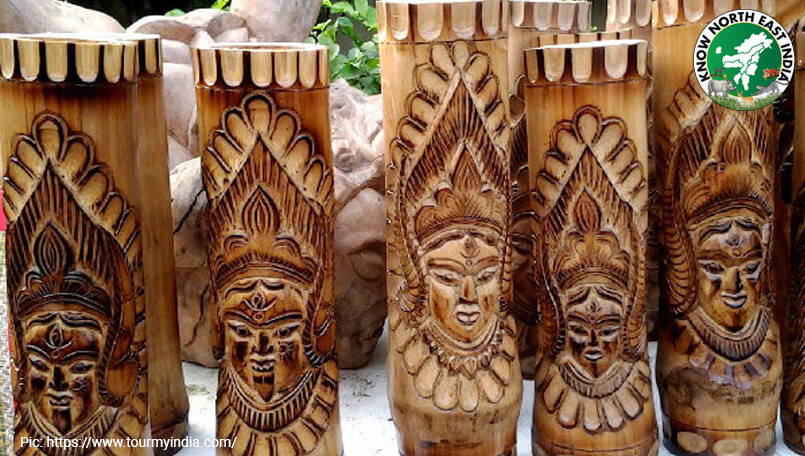 Source: https://www.tourmyindia.com/states/mizoram/art-and-
crafts.html#:~:text=Art%20and%20Crafts%20of%20Mizoram&text=Some%20of%20the%20tradi
tional%20art,cane%20products%20such%20as%20jewelry.
Source: https://www.tourmyindia.com/states/mizoram/art-and-
crafts.html#:~:text=Art%20and%20Crafts%20of%20Mizoram&text=Some%20of%20the%20tradi
tional%20art,cane%20products%20such%20as%20jewelry.
Rokunga
Rokunga (20 February 1914 – 12 July 1969) was a traditional writer and composer from Mizoram, India. He started composing songs in 1934. He is most well known for composing patriotic songs, traditional festive and Christmas songs. His remain the "most cherished" patriotic songs among the Mizo people. [1] He composed over 127 songs, the most popular of which are:
Ro Min Relsak Ang Che (Aw nang kan Lal kan Pathian)
Ka Pianna Zoram Nuam
Raltiang i Kai Ve Ang
Kan Zotlang Ram Nuam
He is one of the best known composers in Mizo literature. Kan Zotlang Ram Nuam (Our Fair Mizo Hill) is among the most popular songs, while Aw nang kan Lal kan Pathian is considered as the Mizo "national anthem".
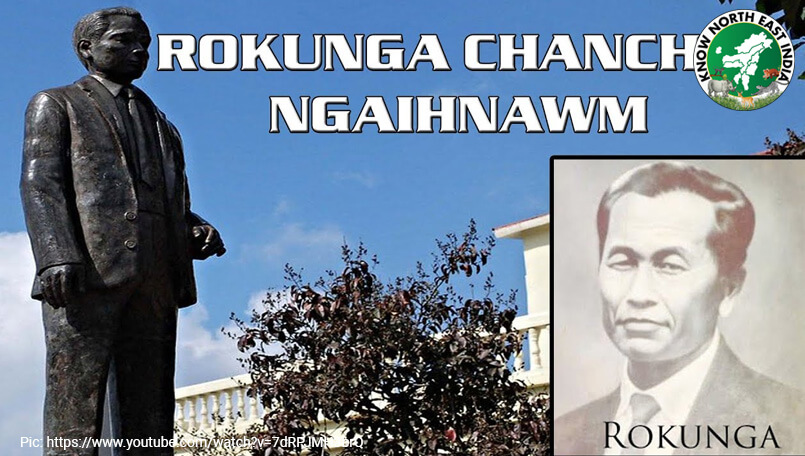 Source: https://en.wikipedia.org/wiki/Rokunga
Source: https://en.wikipedia.org/wiki/Rokunga
Tynnai, Meghalaya
According to Census 2011 information the location code or village code of Tynnai village is 277422. Tynnai village is located in Mawkyrwat Tehsil of West Khasi Hills district in Meghalaya, India. It is situated 17km away from sub-district headquarter Mawkyrwat and 65km away from district headquarter Nongstoin. Tynnai has a total population of 379 peoples. There are about 74 houses in Tynnai village. Mawkyrwat is nearest town to Tynnai.
Source:https://villageinfo.in/meghalaya/west-khasi-hills/mawkyrwat/tynnai.htmlLovlina Borgohain
Lovlina Borgohain (born 2 October 1997) is an Indian amateur boxer who won a bronze medal at the 2020 Summer Olympics in the women's welterweight event, becoming only the third Indian boxer to win a medal at the Olympics.She also won bronze medal at the 2018 AIBA Women's World Boxing Championships and the 2019 AIBA Women's World Boxing Championships.
She won the gold medal at 1st India Open International Boxing Tournament held in New Delhi and silver medal at 2nd India Open International Boxing Tournament held in Guwahati. Borgohain is the first female athlete and the second boxer from Assam to represent the state in the Olympics.In 2020, she became the sixth person from Assam to receive Arjuna Award.
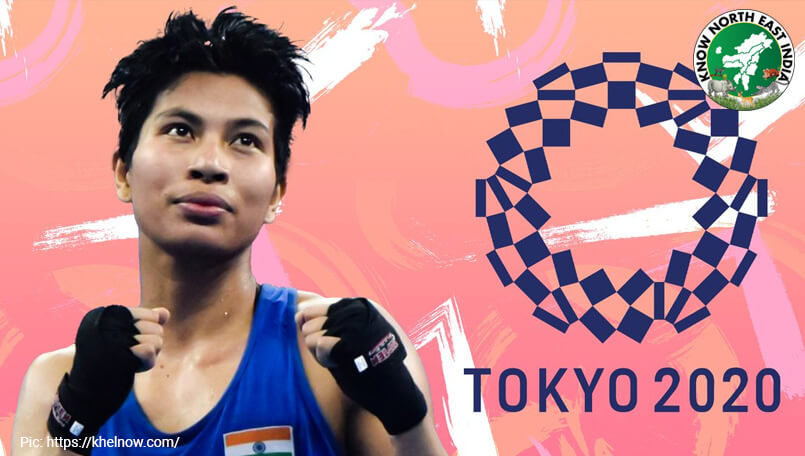 Source:https://en.wikipedia.org/wiki/Lovlina_Borgohain#:~:text=Borgohain%20is%20the%20first%20female,Assam%20to%20receive%20Arjuna%20Award
Source:https://en.wikipedia.org/wiki/Lovlina_Borgohain#:~:text=Borgohain%20is%20the%20first%20female,Assam%20to%20receive%20Arjuna%20Award
Manipur
The state of Manipur is known for the indigenous and traditional games played by the people. Manipur has a history of indigenous games which are played from historical times. These games hold a significant part in building up the physical buildup and active nature of the people.
Sports in Manipur dates back to the time of ancient history. The Department of Youth Affairs and Sports is responsible for the implementation and promotion of youth welfare programmes and games in Manipur. The people of Imphal plays many games which include: Sagol Kangjei , Thang Ta & Sarit Sarak, Khong Kangjei, Yubi Lakpi, Mukna, Hiyang Tannaba and Kang.
Source:https://www.manipuronline.in/about/sports
 GET IN TOUCH
GET IN TOUCH
















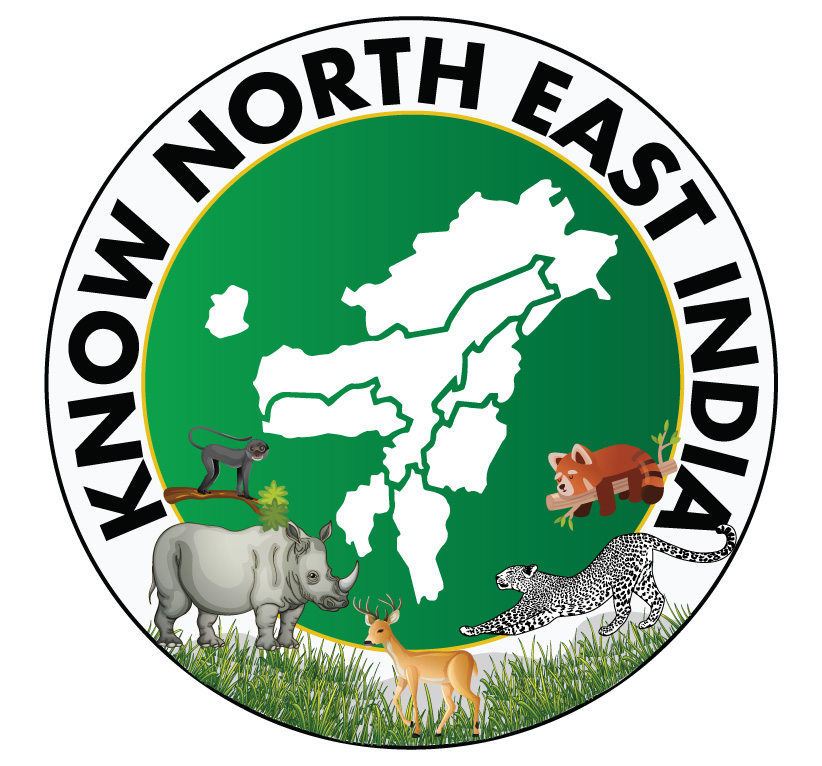
 Startup bharat educational travel startup sikkim invacations
Startup bharat educational travel startup sikkim invacations Impact of covid-19 on Indian travel startups
Impact of covid-19 on Indian travel startups 


